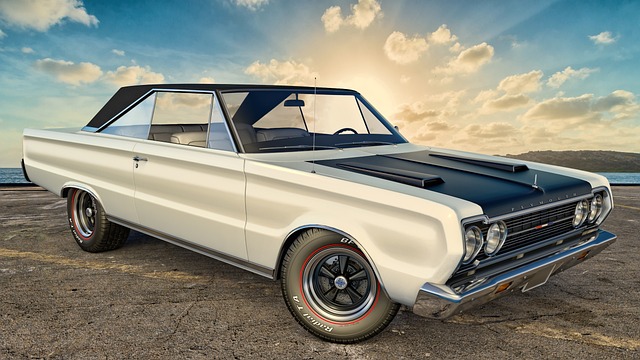Public Transportation Guide for Tourists in Belgium

Belgium, a charming country nestled in the heart of Western Europe, is renowned for its rich history, stunning architecture, and vibrant culture. From the medieval streets of Bruges to the modernist allure of Brussels, this small yet diverse nation offers something for every traveler. However, navigating Belgium’s cities and countryside can be daunting without a clear understanding of its public transportation system. Fear not! This comprehensive guide will walk you through everything you need to know about getting around Belgium like a local.
Why Choose Public Transportation in Belgium?
Belgium boasts one of the most efficient and well-connected public transportation networks in Europe. Whether you’re exploring bustling urban centers or quaint rural villages, public transit provides an affordable, eco-friendly, and convenient way to travel. With trains, trams, buses, and even ferries at your disposal, you’ll have no trouble reaching every corner of this picturesque country.
1. The Belgian Train System: A Traveler’s Best Friend
Belgium’s train network, operated by the National Railway Company of Belgium (NMBS/SNCB), is the backbone of the country’s public transportation system. It connects major cities such as Brussels, Antwerp, Ghent, Bruges, and Liège with frequent departures and high-speed options.
Key Features:
- High-Speed Trains: For longer journeys, take advantage of Thalys or Eurostar services that connect Belgium to neighboring countries like France, Germany, and the UK.
- Intercity and Local Trains: These are perfect for hopping between cities and towns within Belgium. Intercity trains are faster, while local trains stop at smaller stations along the route.
- Ticket Options: Purchase single tickets, day passes, or multi-day railcards depending on your itinerary. The “Go Pass 1” is ideal for tourists under 26, offering unlimited travel on domestic trains for just €6 per trip.
Tips for Using Trains:
- Always validate your ticket before boarding unless it’s an e-ticket purchased online.
- Arrive early during peak hours to secure seating, especially in busy hubs like Brussels Central Station.
- Use apps like SNCB Mobile to check schedules, book tickets, and receive real-time updates.
2. Buses: Reaching Every Nook and Cranny
While trains cover long distances efficiently, buses fill in the gaps by connecting remote areas and neighborhoods not served by rail lines. De Lijn operates buses in Flanders, TEC serves Wallonia, and STIB/MIVB manages routes in Brussels.
What You Need to Know:
- Brussels Bus Network: In the capital city, buses complement the metro and tram systems, providing access to attractions like the Atomium and European Quarter.
- Regional Differences: Each region has its own operator, so familiarize yourself with their specific rules and ticketing systems.
- Night Buses: If you’re out late enjoying Belgium’s nightlife, night buses ensure safe and reliable transport after regular service ends.
Buying Tickets:
Tickets can be purchased at vending machines, ticket offices, or via mobile apps. Consider buying a MOBIB card—a rechargeable smartcard—for seamless travel across different modes of transport.
3. Trams and Metro: Navigating Brussels Like a Pro
Brussels, Belgium’s cosmopolitan capital, features an extensive tram and metro network operated by STIB/MIVB. These services make it easy to explore iconic landmarks like Grand Place, Manneken Pis, and Parc du Cinquantenaire.
Tram Highlights:
- Trams crisscross the city, offering scenic views and quick access to popular destinations.
- Line 44, known as the “Mont des Arts line,” takes you past some of Brussels’ most beautiful sights.
Metro Essentials:
- The Brussels Metro consists of four lines covering key areas of the city.
- Stations are clearly marked, and multilingual signs assist international visitors.
Pro Tip: Download the STIB/MIVB app for interactive maps, live arrival times, and digital ticket purchases.
4. Cycling: Embrace Belgium’s Bike-Friendly Culture
Belgium is a cyclist’s paradise, with dedicated bike lanes and bike-sharing programs available in many cities. Villo! in Brussels and Blue-Bike at train stations allow you to rent bicycles for short trips.
Benefits of Cycling:
- Avoid traffic congestion and parking hassles.
- Experience Belgium’s charming streets and hidden gems up close.
- Stay active while sightseeing!
Safety Tips:
- Wear a helmet and follow road rules.
- Be mindful of pedestrian zones and shared pathways.
5. Ferries and Water Taxis: Unique Ways to Explore
For a truly unique experience, consider traveling by water. In cities like Brussels and Ghent, water taxis and ferry services provide alternative ways to navigate rivers and canals.
Popular Routes:
- Take a water taxi from Graslei to Patershol in Ghent for breathtaking views of medieval architecture.
- Cruise along Brussels’ canal network to discover industrial heritage sites turned cultural hotspots.
6. Practical Tips for Tourists
To make the most of your journey through Belgium, keep these tips in mind:
- Language: While Dutch, French, and German are official languages, English is widely spoken, particularly among younger generations and in tourist areas.
- Currency: Belgium uses the Euro (€). Many ticket machines accept cash and cards, but carrying small change is advisable.
- Peak Hours: Avoid traveling during rush hours (7–9 AM and 4–6 PM) if possible, as trains and buses can get crowded.
- Luggage Storage: Major train stations offer lockers where you can store your belongings while exploring the city.


